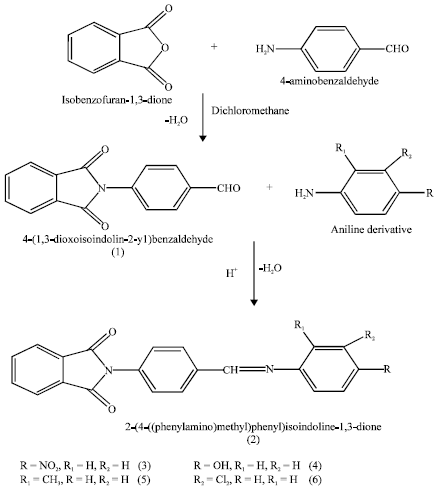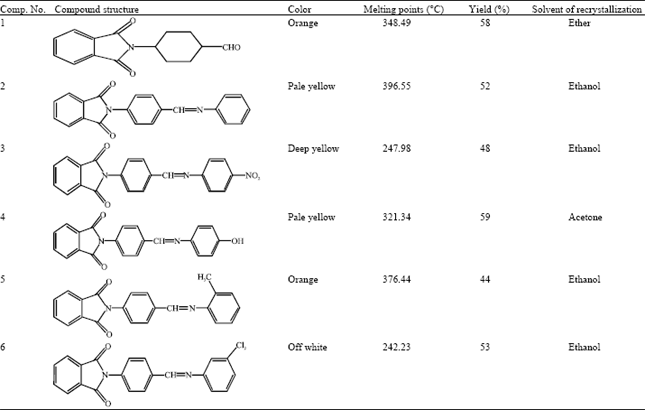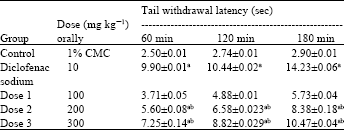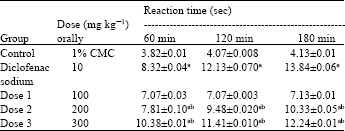Research Article
Synthesis, Characterization and Pharmacological Evaluation of Novel Schiff Bases of Imide Moiety
Department of Pharmaceutical Chemistry, Rayat Institute of Pharmacy, Punjab Technical University, S.B.S. Nagar-144533, Railmajra, Punjab, India
A.D.K. Jain
Department of Pharmaceutical Chemistry, Rayat Institute of Pharmacy, Punjab Technical University, S.B.S. Nagar-144533, Railmajra, Punjab, India
A. Aggarwal
Department of Pharmaceutical Chemistry, Rayat Institute of Pharmacy, Punjab Technical University, S.B.S. Nagar-144533, Railmajra, Punjab, India
N.S. Gill
Department of Pharmaceutical Chemistry, Rayat Institute of Pharmacy, Punjab Technical University, S.B.S. Nagar-144533, Railmajra, Punjab, India













